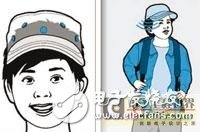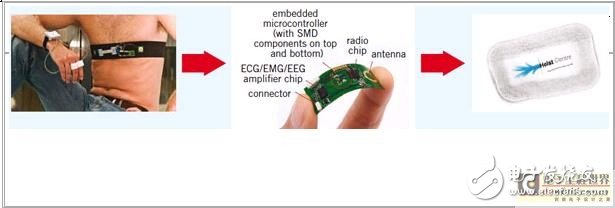Wireless medical devices can improve patient comfort and monitor patients in ways that have never been possible before. But first, optimizing power consumption is especially important.
Wireless sensor nodeWireless devices have changed our work and leisure environment – ​​they may also change our medical facilities. An interesting application for wireless devices is the wireless sensor node, which can be used to monitor heart rate, brain waves, body temperature, blood pressure and other vital signs.
Currently, intensive care units have used human sensors to monitor patients and alert doctors when their condition changes. The sensor is connected to the computer via a cable. While this is not a fundamental issue in this situation, it is obvious that wireless sensor nodes can benefit outpatients in hospitals and elsewhere.

Currently, patients undergoing sleep monitoring tests must wear a sensor that is connected to the computer via a bundle of wires, which can make the patient feel uncomfortable. The research institutes IMEC and Holst Center have developed a headscarf wireless monitoring system with five integrated sensors that capture and transmit all the data needed for an effective sleep test (Figure 1).
This device improves patient comfort during sleep testing in the hospital and eliminates the need for cables. Tests done by Kempenhaeghe, the Dutch sleep disorder center, show that this wireless monitoring system can operate as efficiently as a wired system. It is conceivable that in the not too distant future, patients will get a sleep test cap when they go to see a doctor, and then they can complete the test at home. The results were further analyzed remotely by a sleep disorder professional physician.

Once wireless sensor nodes become mainstream, a large number of new applications will emerge. Sensor nodes can be integrated into many products, including blankets, car seats and clothing. For example, a baseball cap integrated with an EEG sensor can continuously measure brain activity in an epileptic patient (Figure 2). The shirt can also double as an electrocardiograph. Wireless sensor nodes have unlimited uses.
A lot of research and development is still needed to implement the wireless sensor nodes we envision. One of the challenges is related to power consumption. Since the node is not wired to the grid, a battery must be used. The size of the battery should be as small as possible to match the micro system integrated into the garment. If small size is not the first consideration, then reducing power consumption means that the device can support longer autonomy or support more functions, while for implanted sensor nodes, battery life is required for long periods of time. .

The IMEC and Holst Center are developing an ECG strap that is used like the traditional heart monitor belt used by athletes. This strap not only monitors the heartbeat, but also records and transmits a complete ECG. The device is very convenient for outdoor enthusiasts with heart disease or for use in competitive sports (this belt has been tested in the Brussels Marathon). The challenge is to miniaturize the system and achieve a sufficient level of self-reliance. Depending on the application, it may be possible to use it for a few days or permanently. The ultimate goal is to integrate this electronic heart specialist into a small box that fits on a strap (Figure 4) or fits into a shirt.

Power consumption can be used to budget the power of the ECG sensor node by examining the sensor's individual standard components: sensing and reading unit, wireless communication, digital signal processor (DSP), and power supply unit. Obviously, the most power-consuming part of the node is the RF chip, which is responsible for the wireless transmission of sensor data (Figure 5). Typically, the power consumed to implement wireless communication functions ranges from 50% to 85% of the total power budget.


We are dedicated charging solution Manufacturer since 2005.
Supply various Power Station including Portable Power Stations, Solar Power Generators, Smallest Generator etc.
Manufacturing high quality products for customers according to international standards, such as CE ROHS FCC REACH UL SGS BQB etc.
To constantly offer clients more innovative products and better services is our consistent pursuit.
portable power stations for camping, solar pow er stations, jackery portable power station
TOPNOTCH INTERNATIONAL GROUP LIMITED , https://www.itopnoobluetoothes.com